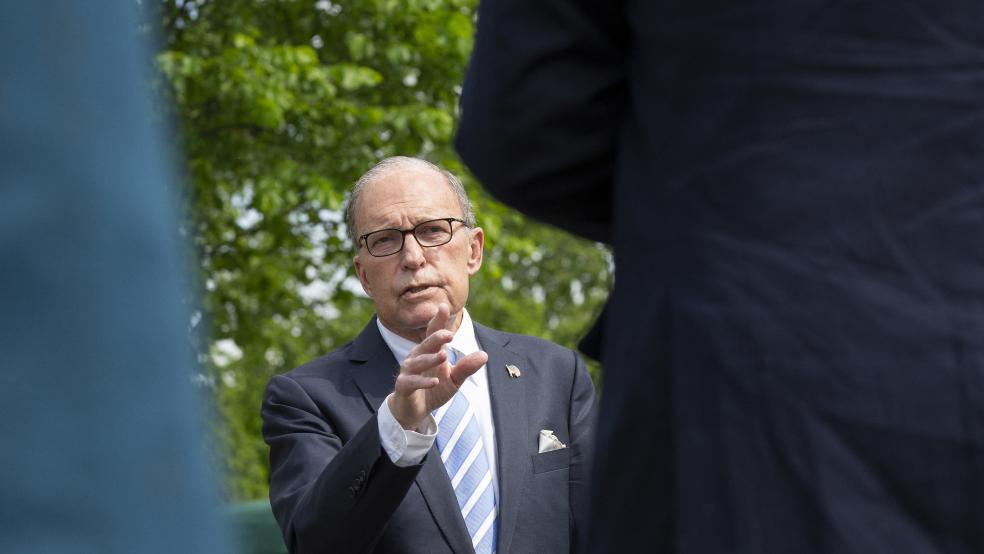Republicans have objected to extending the $600-a-week in extra unemployment benefits Congress provided as part of the CARES Act in March, arguing that the payments, which come on top of state benefits, slow the reopening of the economy by encouraging workers to stay away from their jobs. Now, a top White House economic adviser says that the administration may get behind an alternative proposal: back-to-work bonuses.
Larry Kudlow, the director of President Trump's National Economic Council, told Fox News that the administration “may well” back the idea of providing extra weekly payments to employees who go back to work. “It’s something we’re looking at very carefully,” he said.
Democrats want to extend the $600 weekly boost in jobless benefits, set to expire at the end of July, for six more months. Those benefits are shaping up to be a major sticking point in discussions over the next coronavirus relief bill. Proponents say they provide a critical lifeline and much-needed financial stability for laid-off workers.
Kudlow said he doesn’t think the benefits will be extended. "I frankly do not believe the $600 plus-up will survive the next round of talks, but I think we’ll have substitutes to deal with that issue," he said. Senate Majority Leader Mitch McConnell (R-KY) reportedly told House Republicans last week that the extension of enhanced unemployment benefits “will not be in the next bill.”
Kudlow praised a plan from Sen. Rob Portman, an Ohio Republican, that would provide a temporary bonus of $450 a week, on top of regular wages, for unemployed people who go back to work. The proposal could save taxpayers money and “saves small businesses from going out of business because they can get workers,” Portman told The Wall Street Journal.
Kudlow also said that President Trump still supports the idea of a payroll tax holiday for workers, an idea that lawmakers in both parties have greeted skeptically.
The math behind Portman’s plan: “Portman’s office settled on the amount by surveying benefits and wages in each state to come up with an average amount by which most people would be better off working than staying at home,” the Journal’s Siobhan Hughes and Lindsay Wise reports. “The federal minimum wage is $7.25 an hour, meaning that a minimum-wage worker in states without a higher minimum, or floor, makes roughly $290 a week. The $450 payment each week on top of that base amount was designed with such low-wage workers in mind, in order to leave such employees better off than by taking $600 a week to stay home.”
Another idea for keeping workers on payrolls: Lawmakers in both parties are also looking at expanding the $55 billion, refundable “employee retention tax credit” created by the CARES Act in March. The $3 trillion coronavirus aid package by the House earlier this month would add about $194 billion to the wage subsidy. It would give employers money to cover up to 80% of wages and benefits, up to $45,000 per employee, plus a credit for expenses like rent, the Journal’s Richard Rubin reports.
“For Democrats, the subsidy offers an alternative to the payroll-tax cut President Trump is seeking, which they oppose because it does little for the unemployed. Republican supporters prefer the subsidy to spending programs favored by Democrats and see it as a way to link aid to work,” Rubin writes.
The expanded credit would cover 59 million workers, according to estimates from Congress’s Joint Committee on Taxation cited by Rubin. The House proposal would extend through the end of the year.
Senate Democrats have proposed an even more generous version of the plan.





